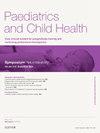儿童心电图更容易
Q3 Medicine
引用次数: 0
摘要
所有的医生都需要能够解读心电图(ECG)。作为一种非侵入性测试,心电图可以为那些准备为其承诺投资的人带来巨大的回报。它具有区分正常与异常的潜力,在调查常见的表现,如心脏杂音和心悸。在更尖锐的情况下,正确的解释提供了对节奏和传导干扰的敏锐理解。本文将研究这个不起眼但功能强大的工具的实用程序。本文章由计算机程序翻译,如有差异,请以英文原文为准。
Paediatric ECG made even easier
All doctors need to be able to interpret an electrocardiogram (ECG). For a non-invasive test the ECG can deliver great rewards to those prepared to invest in its promise. It holds the potential of distinguishing normal from abnormal in the investigation of common presentations such as heart murmurs and palpitations. In more acute situations, correct interpretation offers a keen understanding of disturbances of rhythm and conduction. This article examines the utility of this modest but potent tool.
求助全文
通过发布文献求助,成功后即可免费获取论文全文。
去求助
来源期刊

Paediatrics and Child Health (United Kingdom)
Medicine-Pediatrics, Perinatology and Child Health
CiteScore
1.20
自引率
0.00%
发文量
70
 求助内容:
求助内容: 应助结果提醒方式:
应助结果提醒方式:


